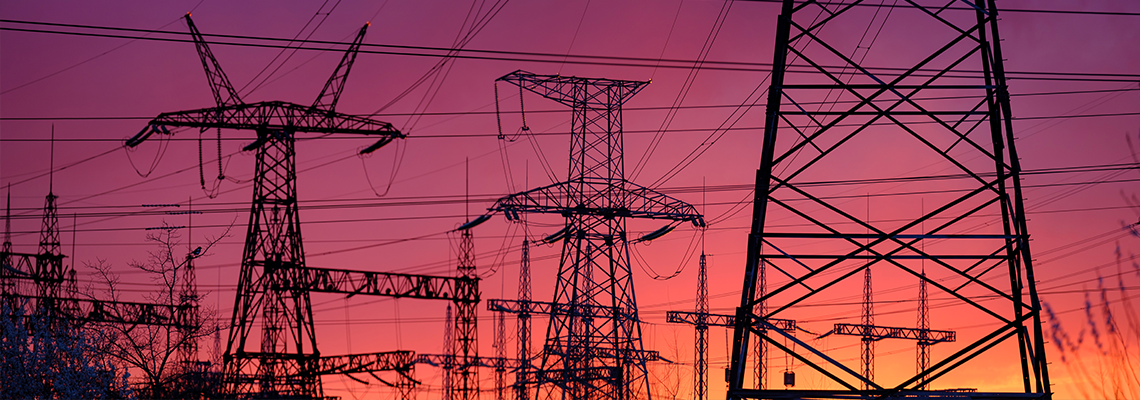Dashcams have recently become indispensable tools for drivers. It's like...

Injuries from working in high-voltage environments can be deadly, but even non-fatal injuries often result in tissue, cellular, skeletomuscular, and organ damage, as well as burns and scarring. According to the Electrical Safety Foundation International, the biggest risk for high-voltage fatalities and injuries lies in the construction industry, where more than half of all fatalities occur.
In contrast, the trade, transportation, and utility industry represent only 11 percent of fatalities, with the natural resources and mining industries coming in just behind. However, a high-voltage injury or fatality can result almost in any work environment where machinery and appliances that require high voltage are located.
If you or a loved one has suffered injuries due to high voltage contact at work in or around Omaha, Nebraska, call Harris & Associates, P.C., L.L.O., for compassionate legal support. Our personal injury attorney will assess the circumstances leading to your injuries and guide you on the legal options available for obtaining compensation for your injuries.
In addition to Omaha, Harris & Associates, P.C., L.L.O., also proudly serves clients in the surrounding counties of Douglas, Sarpy, Dodge, and Lancaster, Nebraska.
As mentioned earlier, construction sites with their pieces of power equipment and cables and wires running everywhere are the most vulnerable to high-voltage incidents. Any work environment that uses high-powered equipment or machinery, even some appliances, can be subject to high-voltage dangers.
Finding agreement on the definition of high voltage is difficult, but even 40 volts are considered dangerous. Under the Department of Energy (DOE) Electrical Safety Guidelines, high voltage is considered to be 600 volts or higher. The International Electrotechnical Commission, in contrast, defines high voltage as 1,000 volts AC or 1,500 volts DC.
Damage from electrical fields occurs, in non-technical terms, from heating that results in the breakdown of cell membranes. Once the outer layer of the skin is destroyed, which happens in milliseconds, then large currents can pass through to cause other damage to muscles, nerves, the skeleton, and organs. A secondary result of the electrical contact is often falling that result in broken bones and concussions.
In addition to injuries resulting from falls, exposure to high-voltage electrical currents can result in:
ELECTROCUTION: If the high-voltage current passes through a vital organ, it is almost always fatal. A lower-voltage exposure can result in fibrillation of the heart, which can be reversed.
ELECTRICAL SHOCK: An electrical shock can cause significant damage to the nervous system.
BURNS: Electrical burns can cause permanent scarring, but physical evidence of the burns might not appear until weeks or months later. The burns can cause chronic pain, headaches, dizziness, memory loss, and an irregular heartbeat.
Non-physical issues may also result, including problems with the speed of mental processing, attention, concentration, memory, and post-traumatic stress disorder (PTSD). Depending on the nature of the electrical shock incident, fires and explosions may also result, which can lead to injuries and fatalities to exposed or nearby personnel.
Employers are subject to safety regulations by the Occupational Safety and Health Administration (OSHA). The General Duty Clause of OSHA requires all employers to maintain a safe and healthy workplace. In addition, OSHA has issued specific regulations concerning electrical safety for both the general industry and the construction industry. Each regulation covers the following:
If you are injured in a high-voltage incident at work, your first recourse to recover compensation for your medical expenses and any lost wages is through workers’ compensation. The workers’ compensation system is a no-fault system, so you cannot sue your employer to recover damages.
However, if your injuries were caused by a third party, you can sue the third party. On a construction site, a third party could be someone who works for a different subcontractor who exposes you to high-voltage electricity. A third party, whether in construction or elsewhere, could also be the manufacturer, designer, or supplier of a piece of equipment that causes your injuries.
In this case, you will have to show negligence on their part that resulted in your injuries. This negligence could be from faulty design, faulty manufacture, or faulty marketing, which means that safety and/or operating instructions for the equipment were either inadequate or not provided.
If you are somehow injured outside of work by high-voltage exposure, perhaps while shopping at a retail outlet, you can have a premises liability claim against the owner/operator of the business. You can seek a claim from their commercial liability insurer or file a personal injury lawsuit.
As you can see, injuries from high-voltage contact can be serious and long-lasting. Your workers’ compensation insurer may try to minimize your injuries and limit or even cancel your benefits. If a third party is responsible, you will need to provide proof of negligence. In either case, it is always better to be guided and represented by an experienced personal injury attorney.
If you or a loved one has suffered electrical injuries in or around Omaha, Nebraska, contact Harris & Associates, P.C., L.L.O., immediately. We will listen to your story, investigate, and then represent you in your fight to secure the just compensation you deserve.